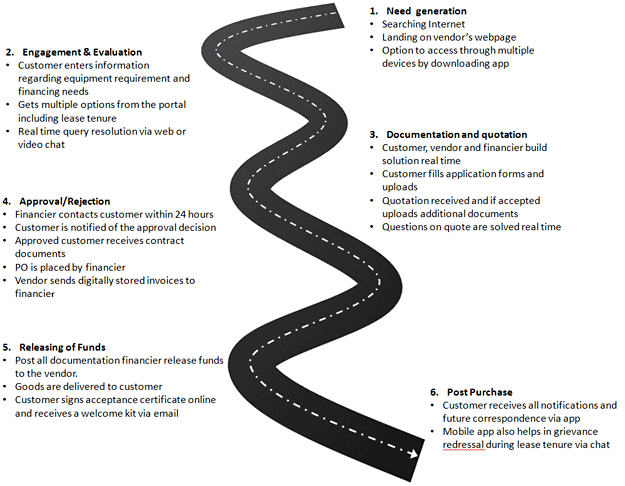![]()
In the equipment finance industry, the relative pace of organic growth is slowing down, competition is getting fierce, and technology is emerging as a key differentiator. As a result, lessors are increasingly playing the role of service providers, rather than custodians of financial risk, begging the question of how financiers will grow profitably going forward.
A Challenging Sector
Over the past few years, the equipment financing industry has been under seemingly constant pressure due to various economic, legislative, and competitive forces. Today, uncertainty persists due to the following factors:
- A dearth of organic growth -- costly mergers and acquisitions have become the leading driver of growth
- High cost of growth -- only 1 in 5 growing asset financiers maintain efficiency levels better than the industry average
- Not all assets are created equal -- as some asset classes outperform, financiers must scramble to diversify
- OEMs are going global -- current equipment financing operations are unable to scale to capture growth in new markets
These challenges, while formidable, also create an opportunity for financiers to reimagine a more flexible, digitally enabled equipment finance operating model. Indeed, the success of equipment leasing may soon be defined by financiers' ability to embed digital technology more seamlessly into their operations.
Embracing Digital
To understand more about what it means to embrace digital, here is an example of a digitized user experience journey for a typical customer who is evaluating buying and financing a piece of equipment.

In a digital world, the entire customer journey has multiple touch points and mediums (web, app, telephone, and even social media) to capture customer experience and feedback. The data collected can be further analyzed to build a continuous improvement journey that improves customer experience, loyalty, and ultimately revenue growth.
Transforming to Drive Organic Growth
In the above example, user experience and speed are at the very core of the transformation. As the industry leverages various technologies for driving the dual strategy for growth and improved user experience, it is critical that this transformation stays grounded in the fundamentals of digital investment and change management. These fundamentals can be represented as four pillars:
- Process-centric digital technologies and analytics: Purposeful, pin-pointed and nimble technologies which can be seamlessly integrated into originations systems on a service oriented architecture and include workflows, mobility solutions, and analytics tools.
- Design thinking: Keeping the end customer in mind and thinking through the transformation required helps identify sources of true value.
- Lean principles that drive agility and continuous experimentation: End-to-end focus and alignment on building operations that adapt leads to measurable business outcomes, such as significant reductions in sales to deal booking cycle times.
- Domain expertise: Building a framework for leveraging industry context and typical outcomes helps drive the best choices to more effectively transforming financing operations.
This approach helps prevent firms from making unwise investments in technology that might not fit their business by emphasizing the need to think across processes, analytics and technology. One such example of an area where equipment financiers may not be maximizing returns is in the implementation of CRM solutions. While the goal is often to create greater efficiency that increases sales volume, this puts too much pressure on the technology alone to drive results. In this case, the steps to a more robust solution that leverages the four pillars should look more like this:
- Discover the true source of value that financiers bring to their customers; is it better service, or a high closing ratio –- what will sustain and grow the relationship?
- Leverage domain knowledge for enriching the customer relationship, like better pricing or favorable repayment terms based on a lender's knowledge of residual valuations.
- Finally, apply analytics and targeted technology solutions, such as tools to create Loss Reserve Pools when underwriting standards are compromised. This enables smarter pricing for all types of credit profiles, opening up new potential business without adding significant risk.
In essence, the difference lies in the ability to better understand the added value that an equipment financier can bring to the customer and then applying point solutions for addressing the deficiencies in a holistic and cost-effective manner. Digital transformation should start at the core of the business, with firms reimagining the true value that they can bring to their end customers. Like all industries, the digitization of equipment finance is inevitable and the fundamentals of doing business will change, but with this change comes opportunity, as long as firms are willing to take the right perspective.